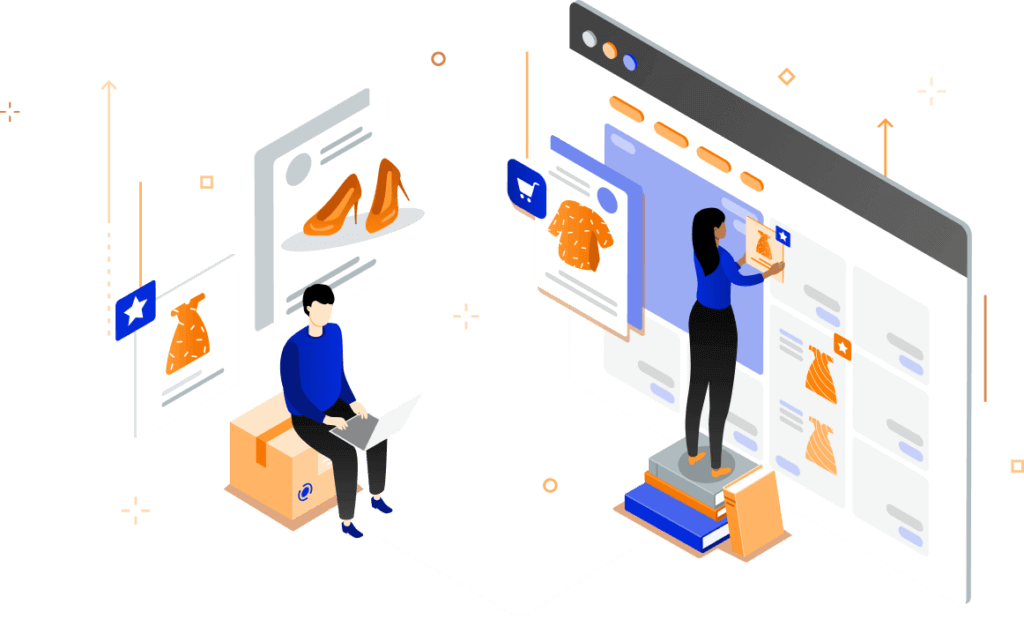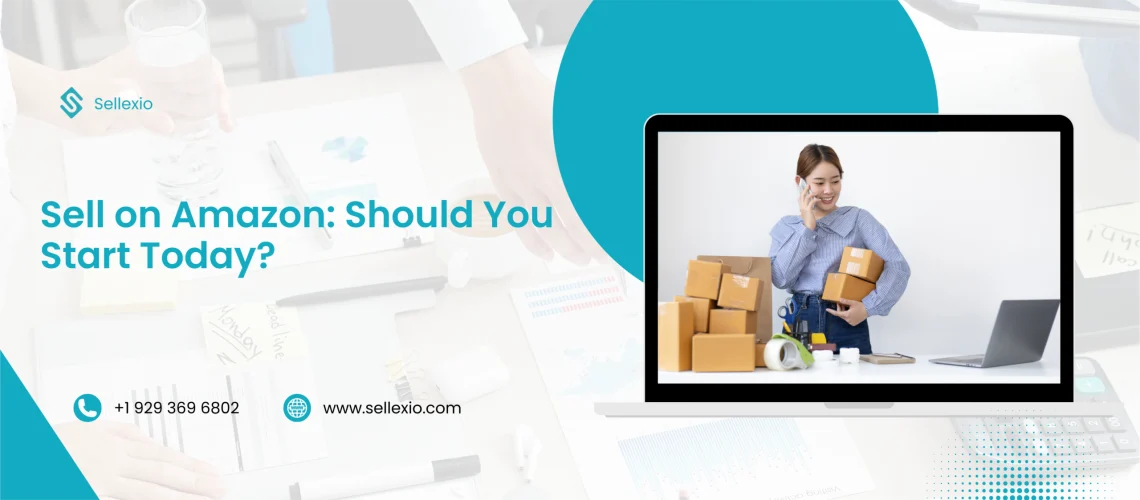Amazon is one of the biggest online marketplaces in the world. Millions of people visit it every day to shop for everything from books to electronics to clothing. For sellers, this means one thing opportunity.
But is it the right move for you?
In this guide, we’ll explore the advantages and disadvantages of selling on Amazon. By the end, you’ll have a clear picture of what it takes to succeed and whether it’s worth your time and investment.
Why Sellers Choose Amazon
1. Access to Millions of Shoppers
Amazon gets over 3.6 billion visits every month. That’s not a typo billions. If you want your products in front of a global audience, this is the place to be.
Unlike creating your own store and trying to bring in traffic, Amazon already has it. Listing your products here means people are more likely to find them without spending tons on ads.
2. Fast Growth with Amazon Tools
When you sell on Amazon, you’re not left alone. The platform provides a full toolkit to help you scale.
- Seller Central: Manage your products, orders, inventory, and reports in one place.
- Seller University: A learning platform with step by step guides.
- Brand Registry: Protects your products from copycats and counterfeit listings.
- Amazon Ads: Promote products with PPC campaigns like Sponsored Products and Sponsored Brands.
These tools are built to make your life easier and your business faster.
3. Use Amazon FBA to Handle Fulfillment
Fulfillment by Amazon (FBA) is a game-changer. Here’s what it means:
- You send your inventory to Amazon.
- Amazon stores, packs, and ships it.
- They even handle returns and customer service.
It saves you time and makes you eligible for Prime Shipping, giving your products a higher chance of winning the Buy Box.
4. Trust and Brand Credibility
Consumers trust Amazon. Even if they don’t know your brand, they feel safe ordering through the platform.
Positive reviews, fast delivery, and easy returns give shoppers peace of mind. You get to leverage Amazon’s reputation to gain trust faster than on your own website.
5. Global Reach Made Simple
Selling internationally is complicated but Amazon simplifies it. With Amazon Global Selling, you can reach buyers in over 100 countries.
You don’t need to worry about foreign logistics, payments, or language support. Amazon takes care of it all. This lets you test new markets without heavy investment.
Challenges of Selling on Amazon

1. Product Sourcing Is Hard Work
Finding the right product is step one. But finding reliable suppliers, ensuring quality, and managing shipping logistics can be a nightmare especially for beginners.
You need to consider:
- Supplier communication
- Sample testing
- Price negotiations
- Shipping delays
- Customs clearance
If sourcing goes wrong, your whole business can suffer.
2. Packaging and Delivery Issues
Even with FBA, issues happen. Fragile items might break. Returns may rise. Customers may leave bad reviews because of things outside your control.
If you choose FBM (Fulfilled by Merchant), the pressure is on you to manage shipping. Delays or bad packaging can hurt your seller rating and your visibility.
3. Fees That Eat Into Profits
Amazon isn’t free. You’ll face:
- Referral fees (usually 8-15%)
- FBA storage and fulfillment fees
- Advertising costs
- Low inventory fees
- Refund processing fees
These add up fast. Without careful planning, your profits can vanish.
4. Intense Competition
Thousands of sellers offer the same or similar products. Standing out is tough.
You’ll compete for:
- Product rankings
- Buy Box placement
- Ad visibility
Even worse, Amazon has its own brands. These often rank higher than yours and undercut your pricing.
5. Brand Protection Problems
Unauthorized resellers, hijackers, and counterfeiters can damage your brand reputation.
If you’re not enrolled in Brand Registry, others might copy your listing, steal your traffic, or sell fake versions of your product.
This leads to:
- Negative reviews
- Lost sales
- Damaged credibility
6. Tough Marketing Environment
Marketing on Amazon is different from social media or Google Ads.
To succeed, you must:
- Write SEO optimized product listings
- Run effective PPC ads
- Analyze data and keywords
- Manage budgets carefully
Without the right skills, you’ll spend a lot and earn very little.
7. Time Consuming Management
Amazon is not passive income. You must actively:
- Track inventory
- Answer customer messages
- Adjust pricing
- Monitor reviews
- Stay compliant with policy updates
If you ignore your store, it will quickly fall behind.
8. Amazon Holds the Power
Finally, Amazon sets the rules and changes them often.
They can:
- Ban listings without warning
- Suspend accounts
- Increase fees
- Change algorithm behavior
You have little control. Your entire business depends on their policies and platform.
Is It Still Worth It to Sell on Amazon?
Let’s break it down:
| Pros | Cons |
|---|---|
| Massive traffic | High competition |
| Access to FBA | Limited control |
| Global selling opportunities | Rising fees |
| Tools for growth and ads | Risk of copycats |
| Trusted by buyers | Time-consuming |
So, is it worth it? The short answer is: yes, if you’re prepared.
If you can manage the upfront work, control your costs, and protect your brand, Amazon can become a reliable sales channel that scales over time.
How to Start Selling on Amazon (Step-by-Step)

Want to get started? Follow these basic steps:
- Choose Your Product
- Do market research. Look for demand, low competition, and good profit margins.
- Register an Amazon Seller Account
- Choose between Individual or Professional account types.
- Source Your Product
- Find a supplier. Order samples. Test quality before bulk buying.
- Create Your Product Listing
- Use high-quality images, SEO titles, bullet points, and keywords.
- Choose FBA or FBM
- Decide if Amazon will handle fulfillment or if you’ll do it yourself.
- Launch and Promote
- Run Amazon PPC ads. Get early reviews. Use deals and coupons.
- Track and Optimize
- Monitor your sales, ads, reviews, and customer feedback. Make changes regularly.
Who Should Sell on Amazon?
Amazon works best for:
- Brand owners who want exposure fast
- Retailers looking to expand
- Entrepreneurs with private label products
- Sellers who want to scale globally
- Anyone ready to invest time and money in the long term
It’s not ideal if you:
- Have very small margins
- Want complete control
- Can’t manage high competition
- Aren’t ready for constant learning
Tips to Succeed on Amazon
- Use Amazon SEO tools like Helium 10 or Jungle Scout.
- Join Amazon Brand Registry early.
- Use FBA for better delivery and Prime access.
- Ask for reviews but follow the rules.
- Always track your profit margins after fees.
- Stay updated on policy changes.
Final Thoughts
Selling on Amazon has huge potential, but it’s not a shortcut to easy money. You need research, strategy, and commitment.
If done right, it can take your business global, increase brand awareness, and drive serious revenue. But it’s not for everyone.
So before you list your first product, ask yourself: Are you ready to play in the world’s biggest marketplace?
FAQs About Selling on Amazon
Yes, but it depends on your product, pricing, and how well you manage fees and marketing.
Yes, through dropshipping or print-on-demand. But it’s more complex, and Amazon has strict rules.
Expect to pay referral fees, fulfillment fees (if using FBA), and optional advertising costs.
Yes, for many sellers. It saves time and makes your products eligible for Prime, which can increase sales.
Not always. Individual sellers don’t, but a business license is recommended for professionalism and growth.
No, you don’t need to register a company to sell on Amazon. You can start as an individual seller. However, if you’re planning to scale, forming a company helps with taxes, branding, and gaining customer trust.
Costs vary. You’ll pay a monthly fee if you have a professional seller account (around $39.99). Plus, there are referral fees (typically 8–15%), FBA fees (if you use fulfillment), and optional ad spend. Calculate all expenses before setting your price.
- FBA (Fulfilled by Amazon): Amazon stores and ships your products. They also handle customer service.
- FBM (Fulfilled by Merchant): You store and ship the products yourself.
FBA is great for scaling and Prime access, while FBM gives you more control.
Here are a few tips:
- Use Amazon PPC ads.
- Price competitively.
- Write keyword-rich product titles and bullet points.
- Get initial reviews using Amazon’s “Request a Review” feature.
- Add clear, high-quality product photos.
It depends on your niche, budget, and product quality. Some sellers see sales within a week. Others take months to break even. Expect 1–3 months of setup and learning time before consistent profits.
Yes. With Amazon Global Selling, you can list products in markets like the U.S., UK, Canada, Germany, Japan, and more. Amazon handles most of the logistics, but you’ll need to follow each region’s tax and compliance rules.
Yes. You can list used items in many categories, such as books, electronics, and tools. Make sure to clearly describe the item’s condition. Amazon also offers a specific program called Amazon Renewed for certified refurbished products.
It depends on your goals:
- Reselling branded products is faster to start but often lower in profit.
- Private labeling gives you full control over branding and pricing, but requires more upfront work and investment.
Private label is more scalable long-term.
If you’re using FBA, Amazon processes returns for you. They refund the customer and deduct the refund amount from your account. For FBM, you handle returns yourself based on Amazon’s return policy.
The Buy Box is the white box on the right side of a product page where customers click “Add to Cart.” Winning the Buy Box means more sales. It’s based on price, shipping speed, customer reviews, and seller performance.

